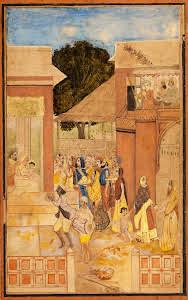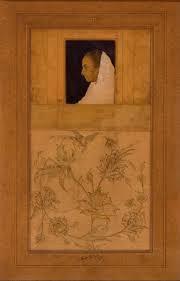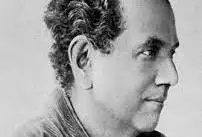He was born on 7th August 1871 in West Bengal. If we want to connect his name with someone famous, then as you may already know he is related to Rabindranath Tagore. He is the nephew of Rabindranath Tagore. We might not know a lot about him as he got overshadowed by his uncle. But today we will talk about the unsung hero, Abanindranath Tagore.
Tagore was born in Calcutta to a wealthy and distinguished family. His uncle was the noted Indian poet, musician, artist, and Nobel Prize recipient, Rabindranath Tagore. Both his brother and grandfather were also artists. Tagore began his formal art education when he was just 11 years old at Sanskrit College.
Abanindranath Tagore was a painter. In fact, a lot of Abanindranath Tagore’s relatives were cartoonists and painters. He was the principal artist of ‘Indian Society of Oriental Art’. He founded the influential Bengal school of art, which led to the development of modern Indian painting. He founded the influential Bengal school of art, which led to the development of modern Indian painting. He valued Swadeshi art a lot. He believed that Western art was "materialistic" in character, and that India needed to return to its own traditions to recover its spiritual values.
His greatest achievement was the Arabian Nights series which was painted in 1930. In these paintings he uses the Arabian Nights stories as a means of looking at colonial Calcutta and picturing its emergent cosmopolitanism. In the early 1890s several of his illustrations were published in Sadhana magazine, and in Chitrangada, and other works by Rabindranath Tagore.
Abanindranath studied at the Government School of Art, Calcutta, learnt painting under the guidance of Olinto Ghilardi and Charles Palmer, and Japanese brushwork under Yokoyama Taikan.

With the success of Tagore's ideas, he came into contact with other Asian cultural figures, such as the Japanese art historian Okakura Kazuku the Japanese painter Yokoyama Taikan, whose work was comparable to his own. In his later work, he began to incorporate elements of Chinese and Japanese calligraphies traditions into his art, seeking to construct a model for a modern pan-Asian artistic tradition which would merge the common aspects of Eastern spiritual and artistic cultures.

Abanindranath Tagore is known as the father of the Bengal School of Art for several reasons: Pioneering a distinctly Indian style: He spearheaded a movement to create an art form that was uniquely Indian, drawing inspiration from traditional Indian art like Mughal miniatures, Rajput paintings, and Ajanta cave frescoes.


